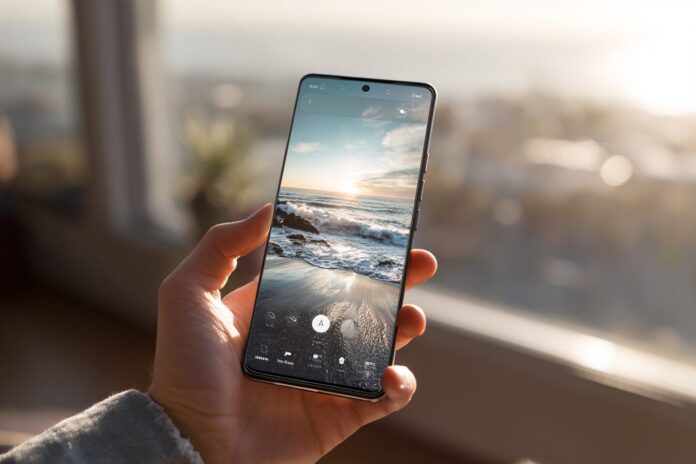In the ever-evolving world of smartphones, artificial intelligence stands as the key battleground where brands compete for supremacy. The Google Pixel 9 leads the charge with its state-of-the-art AI features, setting a high standard for what users expect from their devices. Most importantly, Google’s integration of advanced technology has transformed the smartphone into an indispensable personal assistant. Because competitors like Samsung and Apple are rapidly innovating, every new release, including the upcoming Pixel 10, is instantly scrutinized for potential improvements.
Furthermore, the battle for AI excellence is not just about hardware. It is also about providing a seamless, intuitive experience that adapts to user needs. Therefore, the Pixel 10 is under tremendous pressure to not only maintain Google’s established lead but also to introduce groundbreaking features that redefine user interaction. As readers explore further, they will see why current AI innovations are as critical as robust hardware capabilities.
Why the Google Pixel 9 is the Pinnacle of AI Smartphones
The Pixel 9 excels in many ways that make it the best AI phone on the market. First and foremost, its integration of Google’s Gemini AI is revolutionary. With offerings like an exclusive year-long subscription to Google AI Pro for Pixel 9 Pro owners, users can access cutting-edge features available only on this model. For instance, the Veo 3 feature enables users to describe a concept and instantly generate high-quality short videos complete with natural audio, providing an unparalleled multimedia experience.
Moreover, the inclusion of Circle to Search with AI Mode means that users can inquire about any object on their screen and receive deep contextual insights. This capability, along with smart call handling, real-time translation, and auto-enhanced photo editing, elevates the Pixel 9 above its rivals. Besides that, Google ensures that each feature is easy to use and highly effective, making AI a helpful extension of daily life. For more details on these innovations, readers can visit the Google Blog, which highlights recent enhancements and upcoming features.
The AI Phone Landscape: Intense Competition and New Expectations
Today’s AI phone market is witnessing intense competition as every major player strives to provide the most intuitive user experience. Samsung’s improved AI tools and Apple’s swiftly maturing intelligence suite are setting high expectations among consumers. Because these companies are investing heavily in cross-device synergy and proactive assistance, the market is shifting towards holistic ecosystem integration rather than standalone features.
Most importantly, the emphasis is now on creating devices that learn and adapt over time. Therefore, Google’s commitment to user-friendly, safe, and approachable AI continues to shine. The Pixel series has always focused on integrating technology that actively anticipates user needs, whether through predictive calendar prompts or context-aware virtual assistance. As the industry evolves, reliable updates and feature enhancements will remain crucial. To explore more about these emerging trends, check out insights from TechRadar.
What the Pixel 10 Must Deliver
Rumors and early leaks indicate that the Pixel 10 will be powered by the next-generation Tensor G5 chip. Because hardware innovation is fundamental to AI performance, this new chip could drive deeper integration with Google’s entire AI ecosystem. It is speculated that the Pixel 10 will function as a centralized AI hub, managing not only the smartphone’s features but also harmonizing interactions with devices like Pixel Watch, Pixel Buds, and Google Home products.
Additionally, the upcoming model may introduce personalized and proactive AI that learns from a wide array of cross-app data while still protecting user privacy. New features such as an advanced assistant—potentially branded as “Pixel Sense” or “Pixie”—are anticipated. These improvements are expected to allow the device to offer conversational ease, realizing suggestions that are both intuitive and context-rich. To understand these rumors in further depth, readers may visit the Rokform Blog for detailed speculation on next-gen features.
Features the Pixel 10 Needs to Stay in Front
For the Pixel 10 to solidify its position amidst fierce competition, several key advancements are essential. Firstly, consistent updates must be a priority. Because AI features evolve rapidly, Google needs to ensure that its devices remain current through regular software enhancements. This strategy also helps in keeping older devices up-to-date, which is crucial for building long-term consumer trust.
Seamless integration across a wide array of devices is another vital area. A truly smart ecosystem is one where your phone, smart watch, and smart home systems work synchronously. Besides that, real-world applications of AI—such as improved call screening, superior image recognition, and smarter battery management—are imperative for everyday usability. Equally important is transparency: Google should openly discuss how its algorithms work and share insights about data handling practices, which will further strengthen user confidence. More insights on these trends are available in the video review here.
Final Thoughts: Can Google Stay Ahead?
The Google Pixel 9 exemplifies the immense possibilities when artificial intelligence is seamlessly woven into the mobile experience. With Gemini AI propelling features like Veo 3 and Circle to Search, the Pixel 9 sets a precedent that competitors find hard to match. Because of this, users are accustomed to a level of intelligence that anticipates their needs before they even articulate them.
Looking ahead, the upcoming Pixel 10 faces the dual challenge of outdoing its predecessor while also meeting the rising expectations of a competitive market. Therefore, it must deliver not only in performance but also in connectivity, privacy, and user-centric innovations. If Google manages to balance technical prowess with open communication about its AI methodologies, future devices will continue to define the standard for intelligent smartphones. For additional perspectives on AI evolution in smartphones, you might also want to watch the detailed discussion in the YouTube feature drop.



